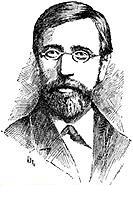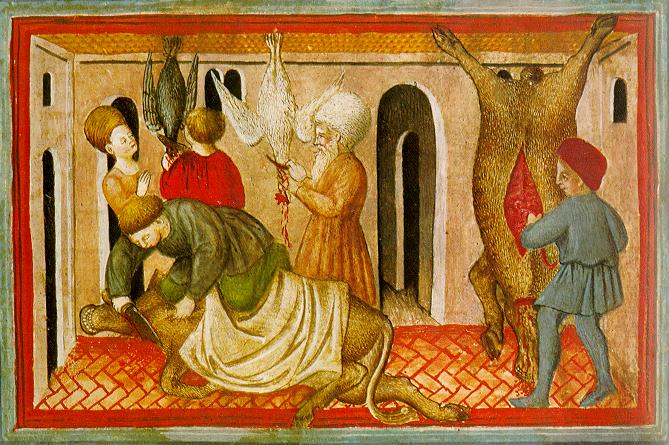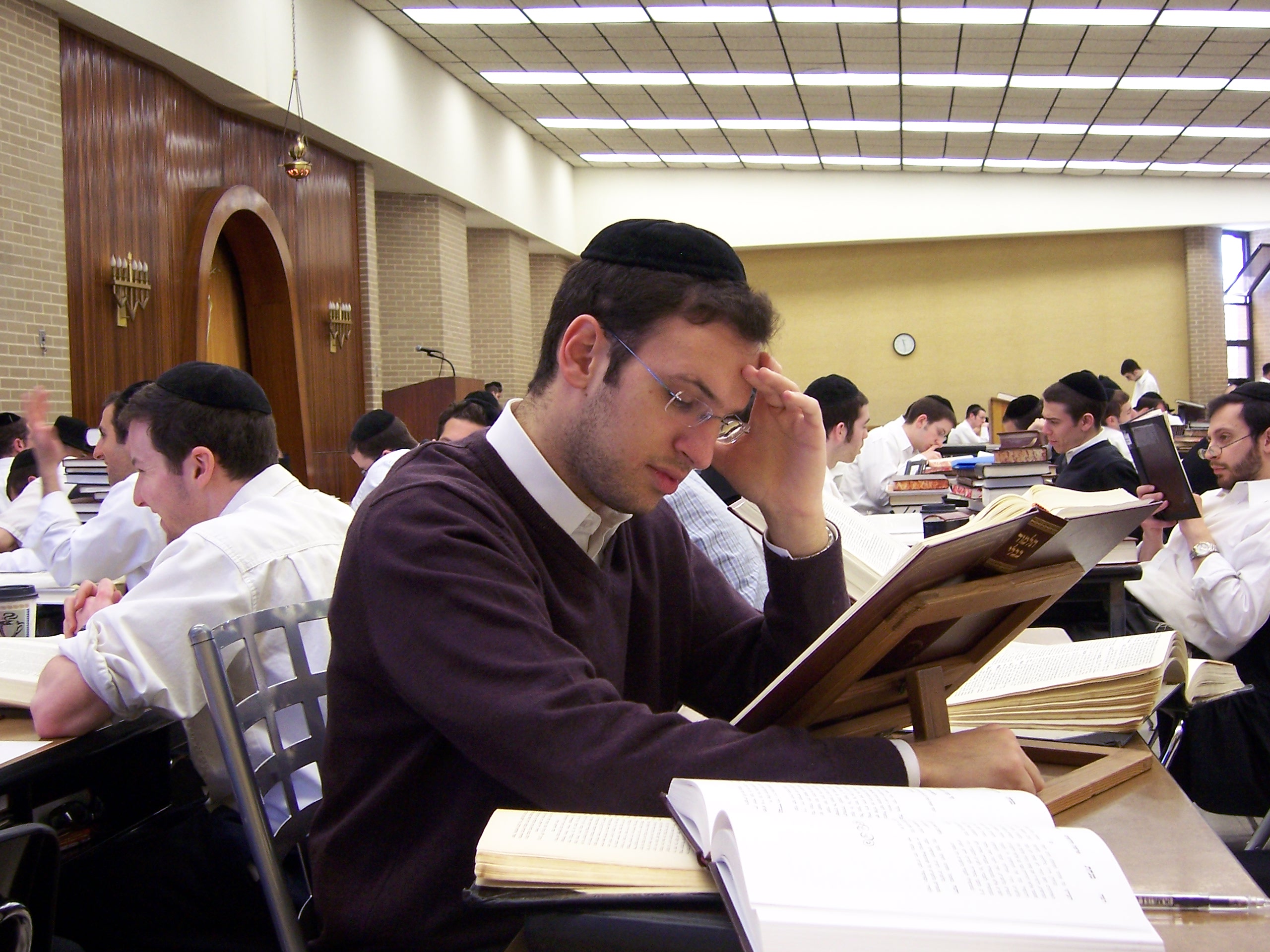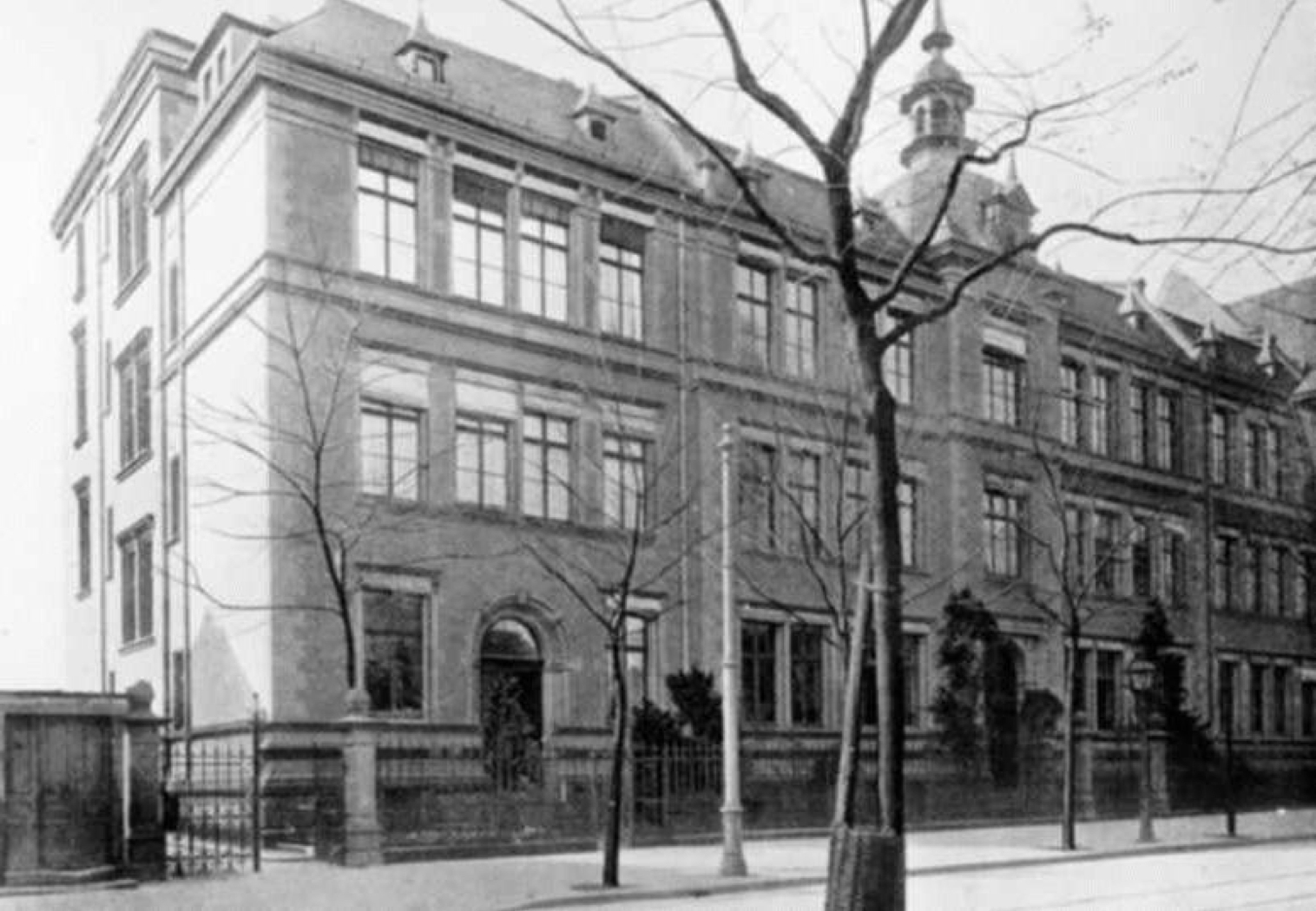|
K'hal Adath Jeshurun
Khal Adath Jeshurun, officially K'hal Adath Jeshurun, abbreviated as KAJ, is an Orthodox Jewish community and synagogue located at 85-93 Bennett Avenue in the Washington Heights neighborhood of Manhattan in New York City, New York, United States. The community includes a high proportion of Ashkenazi German Jews and follows the Western Ashkenazic rite, unlike most Ashkenazic synagogues in the United States, that follow the Eastern Ashkenazic (''Polish'') liturgical rite. The Western Ashkenazic rite covers the community's liturgical text, practices, and melodies. The community uses the Rödelheim Siddur Sfas Emes edited by Wolf Heidenheim and Seligman Baer, although the community's rite varies in some places from Rödelheim. The community has an affiliated synagogue in the heavily Orthodox Jewish neighborhood of Monsey, and there is a synagogue that follows the minhagim of KAJ in Lakewood. History The community is a direct continuation of the pre-Second World War Jewish com ... [...More Info...] [...Related Items...] OR: [Wikipedia] [Google] [Baidu] |
Orthodox Judaism
Orthodox Judaism is a collective term for the traditionalist branches of contemporary Judaism. Theologically, it is chiefly defined by regarding the Torah, both Torah, Written and Oral Torah, Oral, as literally revelation, revealed by God in Judaism, God on Mount Sinai (Bible), Mount Sinai and faithfully transmitted ever since. Orthodox Judaism therefore advocates a strict observance of Jewish Law, or ''halakha'', which is to be Posek, interpreted and determined only according to traditional methods and in adherence to the continuum of received precedent through the ages. It regards the entire ''halakhic'' system as ultimately grounded in immutable revelation, essentially beyond external and historical influence. More than any theoretical issue, obeying the Kosher, dietary, Tumah and taharah, purity, ethical and other laws of ''halakha'' is the hallmark of Orthodoxy. Practicing members are easily distinguishable by their lifestyle, refraining from doing 39 Melakhot, numerous rou ... [...More Info...] [...Related Items...] OR: [Wikipedia] [Google] [Baidu] |
Seligman Baer
Seligman (Isaac) Baer (1825–1897) was a Masoretic text, Masoretic scholar, and an editor of the Hebrew Bible and of the Siddur, Jewish liturgy. He was born in Mosbach, the northern district of Biebrich, on 18 September 1825 and died at Biebrich-on-the-Rhine in March 1897. Baer commenced his Masoretic studies as early as 1844. He belonged to the school of Wolf Heidenheim, and had in his possession some of Heidenheim's original manuscripts and personal copies of his published works with handwritten marginal notes. Few scholars in the nineteenth century had so intimate an acquaintance with all the details of the Masorah as had Baer, and it was largely due to him that the study of this branch of Hebrew philology was brought to the notice of Biblical critics. His friendship with Franz Delitzsch, who stood sponsor for much of his work, aided him in making known to the world the results of his studies. Baer's monumental edition of the Jewish prayerbook according to the Ashkenazi Jews ... [...More Info...] [...Related Items...] OR: [Wikipedia] [Google] [Baidu] |
Shechitah
In Judaism, ''shechita'' (anglicized: ; ; ; also transliterated ''shehitah, shechitah, shehita'') is ritual slaughtering of certain mammals and birds for food according to ''kashrut''. One who practices this, a kosher butcher is called a ''shochet''. Biblical sources Deuteronomy 12:21 states that sheep and cattle should be slaughtered "as I have instructed you", but nowhere in the Torah are any of the practices of ''shechita'' described. Instead, they have been handed down in Rabbinic Judaism's Oral Torah, and codified in ''halakha''. Species The animal must be of a permitted species. For mammals, this is restricted to ruminants which have split hooves. For birds, although biblically any species of bird not specifically excluded in Deuteronomy 14:12–18 would be permitted, doubts as to the identity and scope of the species on the biblical list led to rabbinical law permitting only birds with a tradition of being permissible. Fish do not require kosher slaughter to be ... [...More Info...] [...Related Items...] OR: [Wikipedia] [Google] [Baidu] |
Kashrut
(also or , ) is a set of Food and drink prohibitions, dietary laws dealing with the foods that Jewish people are permitted to eat and how those foods must be prepared according to halakha, Jewish law. Food that may be consumed is deemed kosher ( in English, ), from the Ashkenazi Hebrew, Ashkenazi pronunciation of the term that in Sephardi Hebrew, Sephardi or Modern Hebrew is pronounced ''kashér'' (), meaning "fit" (in this context: "fit for consumption"). Food that may not be consumed, however, is deemed treif ( in English, ), also spelled treyf (). In case of objects the opposite of kosher is pasúl ( in English, Yiddish: פָּסוּל). Although the details of the laws of are numerous and complex, they rest on a few basic principles: * Only certain types of mammals, birds, and fish, Kosher animals, meeting specific criteria are kosher; the consumption of the flesh of any animals that do not meet these criteria, such as pork, frogs, and shellfish, is forbidden, except ... [...More Info...] [...Related Items...] OR: [Wikipedia] [Google] [Baidu] |
Mikveh
A mikveh or mikvah (, ''mikva'ot'', ''mikvot'', or (Ashkenazi Hebrew, Ashkenazic) ''mikves'', lit., "a collection") is a bath used for ritual washing in Judaism#Full-body immersion, ritual immersion in Judaism to achieve Tumah and taharah, ritual purity. In Orthodox Judaism, these regulations are steadfastly adhered to; consequently, the mikveh is central to an Orthodox Jewish community. Conservative Judaism also formally holds to the regulations. The existence of a mikveh is considered so important that, according to Halakha, halacha, a Jewish community is required to construct a kosher mikveh even before building a synagogue, and must go to the extreme of selling Torah scrolls, or even a synagogue if necessary, to provide funding for its construction. Etymology Formed from the Semitic root ק-ו-ה (''q-w-h'', "collect"). In the Hebrew Bible, the word is employed in the sense of "collection", including in the phrase מקוה המים (''miqwêh hammayim'', "collection of ... [...More Info...] [...Related Items...] OR: [Wikipedia] [Google] [Baidu] |
Beth Midrash
A ''beth midrash'' (, "house of learning"; : ''batei midrash''), also ''beis medrash'' or ''beit midrash'', is a hall dedicated for Torah study, often translated as a "study hall". It is distinct from a synagogue (''beth knesseth''), although the two are often coextensive. In Yiddish the ''beth midrash'' may be referred to as a ''zal'', i.e. "hall". ''Beis midrash'' can also refer to a yeshiva gedolah, the undergraduate-level program in Orthodoxy, for boys over 12th grade. The Arabic term "madrasah" is derived from the same Semitic root, and refers to any type of educational institution. The root דרש means "to seek nowledge and is then generalized to mean "expound". History Early rabbinic literature, including the Mishnah, makes mention of the ''beth midrash'' as an institution distinct from the '' beth din'' and Sanhedrin. It was meant as a place of Torah study and interpretation, as well as the development of ''halakha'' (the practical application of the Jewish Law ... [...More Info...] [...Related Items...] OR: [Wikipedia] [Google] [Baidu] |
Kollel
A kollel (also kolel) (, , , , a "gathering" or "collection" [of scholars]) is an institute for full-time, advanced Torah study, study of the Talmud and rabbinic literature. Like a yeshiva, a kollel features Shiur (Torah), shiurim (lectures) and learning ''sedarim'' (sessions); unlike most yeshivot, the student body of a kollel typically consists mostly of married men. A kollel generally pays a regular monthly stipend to its members. History Original sense Originally, the word was used in the sense of "community". Each group of European Jews settling in Israel established their own community with their own support system. Each community was referred to as the "kollel of " to identify the specific community of the Old Yishuv. The overwhelming majority of these Jews were scholars who left their homelands to devote themselves to study Torah and serve God for the rest of their lives. The kollel was the umbrella organization for all their needs. The first examples were Kolel Perush ... [...More Info...] [...Related Items...] OR: [Wikipedia] [Google] [Baidu] |
High School
A secondary school, high school, or senior school, is an institution that provides secondary education. Some secondary schools provide both ''lower secondary education'' (ages 11 to 14) and ''upper secondary education'' (ages 14 to 18), i.e., both levels 2 and 3 of the ISCED scale, but these can also be provided in separate schools. There may be other variations in the provision: for example, children in Australia, Hong Kong, and Spain change from the primary to secondary systems a year later at the age of 12, with the ISCED's first year of lower secondary being the last year of primary provision. In the United States, most local secondary education systems have separate middle schools and high schools. Middle schools are usually from grades 6–8 or 7–8, and high schools are typically from grades 9–12. In the United Kingdom, most state schools and privately funded schools accommodate pupils between the ages of 11 and 16 or between 11 and 18; some UK privat ... [...More Info...] [...Related Items...] OR: [Wikipedia] [Google] [Baidu] |
Elementary School
A primary school (in Ireland, India, the United Kingdom, Australia, New Zealand, Trinidad and Tobago, Jamaica, South Africa, and Singapore), elementary school, or grade school (in North America and the Philippines) is a school for primary education of children who are 4 to 10 years of age (and in many cases, 11 years of age). Primary schooling follows preschool and precedes secondary schooling. The International Standard Classification of Education considers primary education as a single phase where programmes are typically designed to provide fundamental skills in reading, writing, and mathematics and to establish a solid foundation for learning. This is ISCED Level 1: Primary education or first stage of basic education.Annex III in the ISCED 2011 English.pdf Navigate to International St ... [...More Info...] [...Related Items...] OR: [Wikipedia] [Google] [Baidu] |
Kristallnacht
( ) or the Night of Broken Glass, also called the November pogrom(s) (, ), was a pogrom against Jews carried out by the Nazi Party's (SA) and (SS) paramilitary forces along with some participation from the Hitler Youth and German civilians throughout Nazi Germany on 9–10 November 1938. The German authorities looked on without intervening.German Mobs' Vengeance on Jews", ''The Daily Telegraph'', 11 November 1938, cited in The euphemistic name comes from the shards of broken glass that littered the streets after the windows of Jewish-owned stores, buildings, and synagogues were smashed. The pretext for the attacks was the assassination, on 9 November 1938, of the German diplomat Ernst vom Rath by Herschel Grynszpan, a 17-year-old German-born Polish Jew living in Paris. Jewish homes, hospitals and schools were ransacked as attackers demolished buildings with sledgehammers. Rioters destroyed over 1,400 synagogues and prayer rooms throughout Germany, Austria, and the Su ... [...More Info...] [...Related Items...] OR: [Wikipedia] [Google] [Baidu] |
Torah Im Derech Eretz
''Torah im Derech Eretz'' ( – Torah with "the way of the land"Rabbi Y. Goldson, Aish HaTorah"The Way of the World", Ethics of the Fathers, 3:21/ref>) is a phrase common in Rabbinic literature referring to various aspects of one's interaction with the wider world. The term also refers to a philosophy of Orthodox Judaism articulated by Rabbi Samson Raphael Hirsch (1808–1888), which formalizes a relationship between traditionally observant Judaism and the modern world. The resultant mode of Orthodox Judaism is sometimes termed Neo-Orthodoxy or, in some historiographies, Frankfurter Orthodoxy. Derech Eretz The term ''Derech Eretz'', literally "the way of the land", is inherently ambiguous, with a wide range of meanings in Rabbinic literature, referring to earning a livelihood and behaving appropriately, among others. The phrase ''Torah im Derech Eretz'' is first found in the Mishna in Tractate '' Avoth'' (2:2): "Beautiful is the study of Torah with ''Derech Eretz'', as involv ... [...More Info...] [...Related Items...] OR: [Wikipedia] [Google] [Baidu] |
Samson Raphael Hirsch
Samson Raphael Hirsch (; June 20, 1808 – December 31, 1888) was a German Orthodox rabbi best known as the intellectual founder of the '' Torah im Derech Eretz'' school of contemporary Orthodox Judaism. Occasionally termed ''neo-Orthodoxy'', his philosophy, together with that of Azriel Hildesheimer, has had a considerable influence on the development of Orthodox Judaism. Hirsch was rabbi in Oldenburg, Emden, and was subsequently appointed chief rabbi of Moravia. From 1851 until his death, Hirsch led the secessionist Orthodox community in Frankfurt am Main. He wrote a number of influential books, and for a number of years published the monthly journal ''Jeschurun'', in which he outlined his philosophy of Judaism. He was a vocal opponent of Reform Judaism, Zionism, and similarly opposed early forms of Conservative Judaism. Early years and education Hirsch was born in Hamburg, which was then a part of Napoleonic France. His father, Raphael Arye Hirsch, though a merchant, devot ... [...More Info...] [...Related Items...] OR: [Wikipedia] [Google] [Baidu] |










